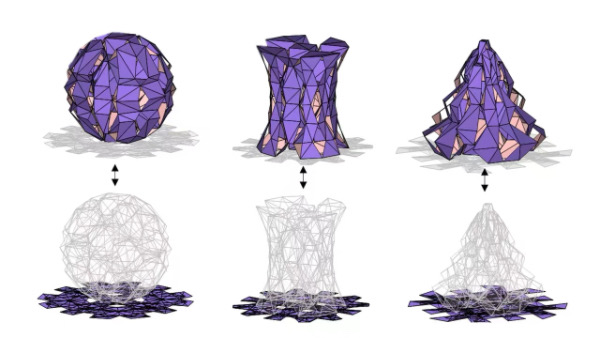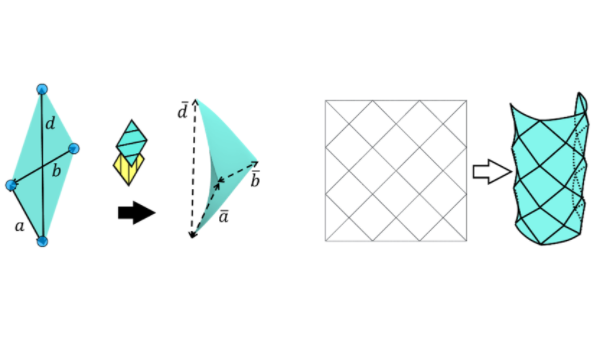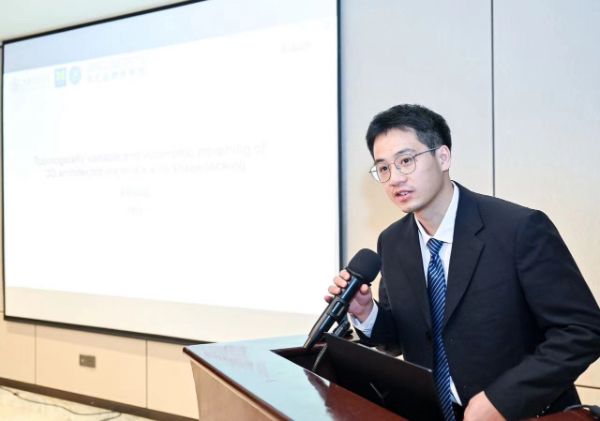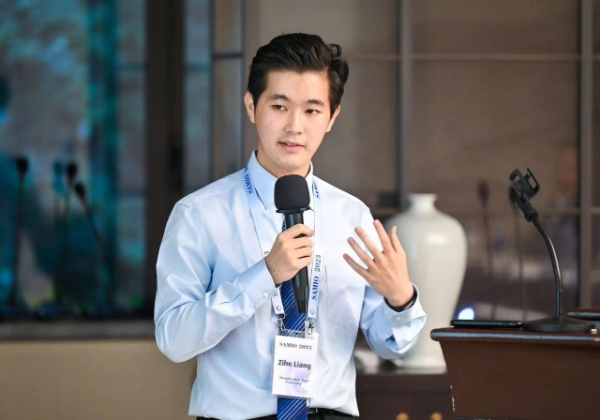Two graduate students of the University of Michigan – Shanghai Jiao Tong University Joint Institute (UM-SJTU JI, JI hereafter) displayed their exceptional talents at the 2nd International Symposium on Structures and Materials Inspired by Origami (SAMIO 2023), claiming two Best Oral Presentation awards for their papers. The international symposium held in Shaoxing of East China’s Zhejiang Province recently was attended by representatives from global leading universities such as Oxford University, California Institute of Technology, the University of Tokyo, National University of Singapore, Tsinghua University, Peking University, and SJTU.
Doctoral student Kai Xiao and master student Zihe Liang, both from the research group (S-Lab) of JI Associate Professor Jaehyung Ju, won the awards with their presentations titled “Flat-foldable and shape-lockable 3D curvilinear modular origami structures” and “3D Curvilinear Panel-Deformation-Inspired Morphing of Origami by 4D Printing” respectively.

Figure 1. Inverse design of flat-foldable origami-inspired metamaterials
Shape-morphing structured materials, which change their shapes from one state to another, tuning their physical properties in adapted, active, and even intelligent ways to varying physical environments. However, most prior morphing materials actuated by various stimuli are limited to one-dimensional (1D) or 2D geometries (e.g., spatial curves or surfaces). 3D volumetric shape-morphing has remained inaccessible for the lacking of fundamental understanding of structural and material complexity in high dimension. To address this issue, Xiao of Professor Ju’s team proposed a design strategy focusing on structural reconfiguration inspired by 3D modular origami. The research work unlocks previously inaccessible design space of 3D morphing, enabling reconfiguration to arbitrary 3D volumetric shapes on user’s demand. This mathematical framework can be readily adopted by others, including those outside this field such as aerospace, biomedical, and micro-robotics, to create customized morphing solutions tailored to their specific applications.
Figure 2. Curvilinear surface with negative Gaussian Curvature applied to Yoshimura-inspired pattern
The active shape morphing from 2D to 3D using smart materials holds significant value in various fields, including customized mass production and convenient logistics for storage and transportation, as required by Industry 4.0, and manufacturability of three-dimensional structures in micro-nano devices, breaking the limitations of 2D microfabrication. Particularly in fields such as biomedicine, marine engineering, aerospace, and robotics, the shape-morphing from 2D to 3D requires surface deformation. To address these needs, Liang of Professor Ju’s team utilized 4D printing based on shape memory polymers to program the anisotropic residual stress, enabling the printed two-dimensional structure to exhibit non-Euclidean plate morphing and non-zero Gaussian curvature. This mechanism was applied to non-rigid origami patterns, and a corresponding thermomechanical model was constructed to explain and analyze the process, thereby achieving prediction of the final configuration. The research work holds significant importance in the design and manufacturing of three-dimensional micro-nano devices, biomedical device design, and robotics applications.







